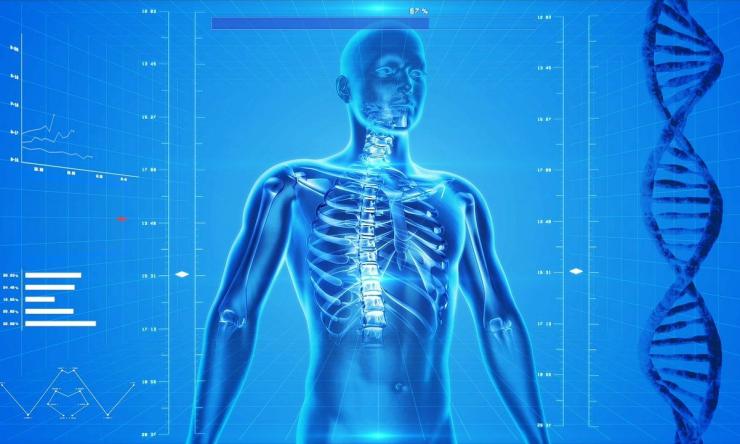New statistical tool reveals hidden genetic pathways in complex diseases
A collaboration including Rice University, ≤ð¡Ò…Á«¯»Îø⁄ and Texas Children‚Äôs Hospital‚Äôs Jan and Dan Duncan Neurological Research Institute (NRI) has produced a breakthrough in how to study and classify complex diseases. The new method, called the Causal Pivot, gives researchers a powerful way to detect hidden genetic drivers and subgroup patients by true biological causes of their illnesses using new computational tools developed in the research, paving the way for major advances in personalized genetic medicine. The research was published in the .
Complex diseases like Parkinson’s, breast cancer and high cholesterol are not the same for everyone who has them. While patients may share the same diagnosis, the path that led them there can differ dramatically; some cases may be caused by the combined effect of thousands of common genetic variations, while others may be driven largely by a single rare, harmful mutation in an important gene. Until now, large-scale genetic studies have tended to blur these differences, averaging genetic effects across all patients.
“Not everyone with a complex disease gets there the same way,” said lead author Dr. Chad Shaw, a professor of molecular and human genetics at Baylor with a joint appointment at Rice and a faculty member at the NRI. Shaw is also the director of Rice’s (D2K). “The Causal Pivot is designed to detect those differences and sort patients into more precise, biologically meaningful subgroups. This is a foundational step toward truly personalized genetic medicine.”
The method is a novel extension in the methodology of Causal Analysis, which is an area of statistical science that Shaw teaches at Rice.
The Causal Pivot leverages something called a polygenic risk score (PRS), which is a summary of the combined effect of many common genetic variants and something researchers often already know about many diseases. The PRS acts as a “pivot” against which the method tests other potential causes, such as rare, harmful DNA changes known as rare variants.
If a rare variant truly drives disease in some people, then among patients with the disease, those who carry the variant tend to have lower polygenic risk scores than those who don’t (because the rare variant itself provides the push into illness). The Causal Pivot formalizes this concept into a rigorous statistical test that can identify these rare variant–driven subgroups and estimate their effect size.
Unlike traditional genome-wide association studies, which require large sets of both patient and control data, the Causal Pivot can work in cases-only designs — an advantage in real-world settings where healthy control samples may be unavailable, such as in rare subtypes, certain clinical trials or studies of adverse drug reactions. The team also developed safeguards against confounding factors like ancestry, ensuring the method’s reliability in diverse populations.
Using data from the UK Biobank, which includes genetic and health information from more than half a million volunteers, the researchers validated the method on three well-studied gene–disease pairs: LDLR variants in people with very high LDL cholesterol (hypercholesterolemia); BRCA1 variants in breast cancer; and GBA1 variants in Parkinson’s disease.
In each case, the Causal Pivot detected clear signals consistent with known biology — strong evidence that the method works as intended. Cross-disease tests (such as looking for GBA1’s effect in breast cancer) showed no signals, and harmless “synonymous” variants produced no false positives.
The team went further in Parkinson’s testing, applying the approach to a lysosomal storage pathway, which is a group of genes involved in recycling cellular waste. They found that patients with a heavier burden of rare variants in this pathway tended to have lower polygenic risk scores, suggesting multiple rare hits can combine to create an alternative route into disease.
“This kind of subgroup detection changes the game,” Shaw said. “It opens the door to clinical testing and tools that can match patients to therapies based on the actual mechanism driving their disease, not just the name of the condition.”
The implications for personalized medicine are far-reaching. By revealing the genetic “routes” into a disease, the Causal Pivot could improve genetic testing strategies, helping doctors decide who should be tested for specific rare mutations. It could also enable more targeted clinical trials, focusing on patients most likely to respond to a given therapy. Even more, it provides a framework for classifying patients by mechanism, not just symptoms, paving the way for mechanism-specific treatments.
“Personalized medicine will be grounded in comprehensive genome sequencing for each patient, but it's hard for health care providers to understand because there are more than 5 million variants in each person's genome,” said Dr. John Belmont, adjunct professor of molecular and human genetics at Baylor and one of the authors of the paper. “Current interpretation workflows are rule-based, uncalibrated and don’t produce patient-level causal probabilities. Causal analysis, by placing the emphasis on the effects of interventions, is ideal for medical decision making. Dr. Shaw's new work is a step along the road to formally integrating information from both clinical and population cohorts. It introduces a new framework for modeling the competing factors in disease and will help doctors accurately weigh all the possibilities.”
“Most genetic studies of human disease have focused exclusively on either common or rare genetic variations –changes in the DNA code,” said co-author Dr. Joshua Shulman, professor of neurology, neuroscience and molecular and human genetics at Baylor. He also is the co-director of the Duncan NRI. “Dr. Shaw’s team has created an elegant statistical model that helps unify these approaches, allowing for a more powerful, integrated analysis. We are excited to use this strategy to discover new genetic risk factors for Alzheimer’s and Parkinson’s disease.”
The researchers envision future applications that go beyond genetics. In place of the polygenic risk score, the pivot could be any established disease driver — an environmental exposure, a biomarker or even an imaging feature, for example — making the framework a versatile discovery engine for multiple branches of medicine.
“Personalized medicine needs structure,” Shaw said. “We’ve created a clear, testable way to account for genetic diversity within a disease. It’s a tool we can use on large datasets today, and one we can adapt to the clinic tomorrow.”
This collaborative study included C.J. Williams at Genetics & Genomics Services, Inc.; Tao Tao Tan at ≤ð¡Ò…Á«¯»Îø⁄; and Daniel Illera and Nicholas Di at Rice University.
This research was supported by funding from the Jan and Dan Duncan Neurological Research Institute, the Ting Tsung and Wei Fong Chao Foundation, the Huffington Foundation and in part by a grant from Genetics & Genomics Services, Inc.



